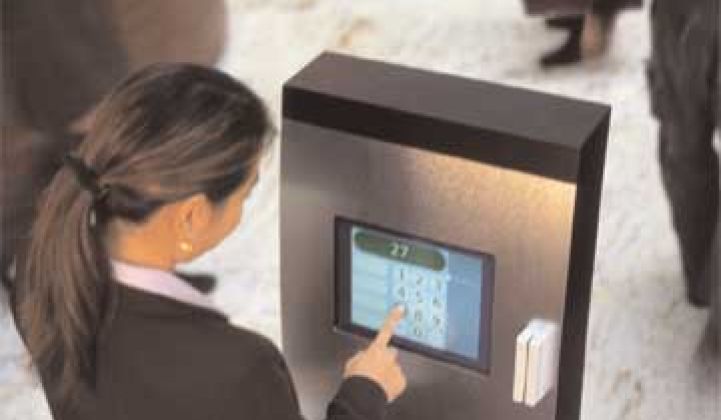When it comes to building efficiency, there’s lots of talk about networked lighting, upgraded HVAC, green roofs and other improvements to cut energy use and save money.
But many of the most aggressive retrofits or new green construction projects don’t address one energy user that sits in every large building: elevators.
There are plenty of reasons why elevators don’t get any respect in the world of green. Most only account for about five percent to eight percent of a building’s total energy use. In many cases, elevators have been in place for decades and undertaking a full replacement is expensive and inconvenient. What's more, performing heavy maintenance (forget about retrofits) does nothing to garner the good will of inconvenienced tenants.
“Elevator energy has largely just been ignored,” said Jim Bos, an elevator technology expert and consultant.
But it doesn’t have to be that way, Bos argued recently at the ConEd Energy Efficiency Summit in New York City. The Big Apple is home to approximately 58,000 elevators. The average lifespan of an elevator is about 25 years before it gets any significant upgrades or improvements.
For anyone who has spent any time in an old hotel or pre-war building, it's patently clear that there are many elevators that are living solely off their charm, far beyond the time when an upgrade was due. In an average case, however, making the right component changes can cut elevator use up to half or even more -- saving up to about five percent of a building’s total energy use.
Most of the energy that goes into elevators can be split into three categories: lighting, hoisting and standby. Even without switching out an entire system, there are improvements that can be made in each area.
Lighting is not the energy hog in most elevators, but replacing lights in elevators with CFLs or LEDs can easily cut power use.
The next category is where the heavy lifting really comes in. Hoisting is just that: the mechanism used to hoist the elevator up. There are two types of hoisting: hydraulic and traction. Hydraulic lifts are expensive to maintain and use much more energy than a traction system; therefore Bos said that they’re essentially on their way out. Fully switching out these systems is probably the most bang for the buck when it comes to replacing whole systems.
The other, more common elevator is a traction elevator, which rides on a steel rope with a counterweight on the other end. It takes energy to make it go up, but it also generates energy on the way down. In the past, capturing that downward power, known as regeneration, was inefficient, but the process has gotten much better in recent years, said Bos.
For some buildings, just retrofitting the right motor to capture that energy could offer a lot of savings. Shopping by energy efficiency takes some effort, however, as there are currently no required energy specifications for elevators. Elevators themselves also don’t contribute to USGBC LEED points, so there is a lack of incentive in the green building world to make the improvements.
The third area of energy use is standby. At the Omaha Public Power District, the utility made a retrofit to its elevator system and cut standby use by more than 75 percent.
Another place for improvement is destination dispatching. Although this type of system can seem insanely annoying the first time you encounter it (it involves punching in the floor number you’re going to when standing outside the elevator bank; once you get inside the car, there are no buttons to choose your floor), they are far more efficient in delivering people in the most efficient pattern.
Another more subtle issue is that occupancy changes might require rethinking how the elevator layout is utilized. Elevator banks are designed into a building, but no matter how occupancy shifts over the decades, the banks are still all being used. In some cases, placing some banks in standby mode for all or some of the day could be a big energy saver. “No one ever asks if you need them all,” said Bos. In fact, usually owners and occupants are clamoring for more.
Like all other energy efficiency retrofits, the solutions for saving elevator energy varies greatly from building to building. A good baseline to measure usage patterns and energy consumption is an important place to start. Add in a skilled consultant, and improvements can be found for nearly every elevator system. “The equipment exists,” said Bos. "Small component changes can have big results.”



